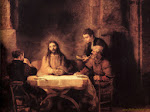
Saw White Christmas again for the upteenth time. This time, I noticed that not only was the song White Christmas written by Irving Berlin, but all the songs in the movie were written by him. Impressive. I also saw or heard a note that the song originally appeared in Holiday Inn, filmed about 10 years earlier - most notable for the songs in it, especially the introduction of White Christmas, which had a profound impact on the troops serving abroad and mostly not at home during Christmas in the war years. So I also took the time to watch Holiday Inn, and again noticed Irving Berlin wrote all the music. So though I had heard about Irving Berlin, I decided to look some more into him.
Christmas, which had a profound impact on the troops serving abroad and mostly not at home during Christmas in the war years. So I also took the time to watch Holiday Inn, and again noticed Irving Berlin wrote all the music. So though I had heard about Irving Berlin, I decided to look some more into him.
Turns out Irving Berlin (Israel Baline), a Jewish immigrant from Russia, is considered one of the  greatest songwriters in America. Amoung the many songs he wrote include Blue Skies, Putting On The Ritz, Easter Parade, God Bless America, Annie Get Your Gun, This Is The Army, and many others. He wrote between 1250 and 1500 songs, 25 of which became number one hits. His songs appear in 15 films. Irving Berlin's creative contribution to our culture probably affects us more than we know, and makes up a part of Americana enmeshed in our subconscious. I intend to take the time to listen to more of his music, and I hope you will as well, even if he might seem to be somewhat of an old hat to some these days.
greatest songwriters in America. Amoung the many songs he wrote include Blue Skies, Putting On The Ritz, Easter Parade, God Bless America, Annie Get Your Gun, This Is The Army, and many others. He wrote between 1250 and 1500 songs, 25 of which became number one hits. His songs appear in 15 films. Irving Berlin's creative contribution to our culture probably affects us more than we know, and makes up a part of Americana enmeshed in our subconscious. I intend to take the time to listen to more of his music, and I hope you will as well, even if he might seem to be somewhat of an old hat to some these days.


 ok how he became an evangelical in his later teens, with many ties to Maranatha ministries, but also eventually attending attending Fordham, a Jesuit college where he received a doctorate. He later taught at Whittier College and Trinity International University before settling at Baylor.
ok how he became an evangelical in his later teens, with many ties to Maranatha ministries, but also eventually attending attending Fordham, a Jesuit college where he received a doctorate. He later taught at Whittier College and Trinity International University before settling at Baylor.

 After the film, many tourists came to Thailand looking for the bridge over the River Kwai. To fix the problem, the Thai government renamed the Mae Klong River so the tourists could find the Bridge over the River Kwai (though it is called the River Kwae).
After the film, many tourists came to Thailand looking for the bridge over the River Kwai. To fix the problem, the Thai government renamed the Mae Klong River so the tourists could find the Bridge over the River Kwai (though it is called the River Kwae).


 n stated aloud in church service in both traditions, or at least acknowledged as a statement of basic Christian beliefs. More importantly, each statement coincides with one of the great doctrines of the
n stated aloud in church service in both traditions, or at least acknowledged as a statement of basic Christian beliefs. More importantly, each statement coincides with one of the great doctrines of the  Later, at a 2nd Council, they also asserted that the Holy Spirit was also God, and the Creed we have today is usually a combination of both Councils of bishops.
Later, at a 2nd Council, they also asserted that the Holy Spirit was also God, and the Creed we have today is usually a combination of both Councils of bishops.




